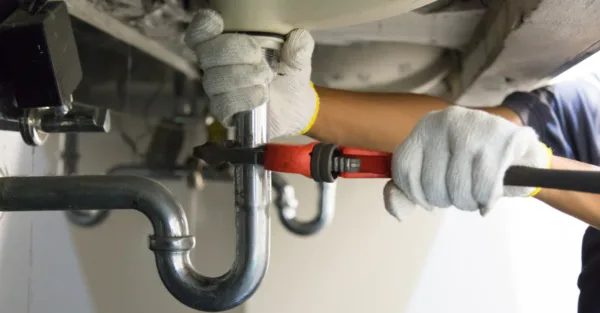If your home or belongings are damaged during a disaster, crime, or accident, you will want to use your homeowner’s insurance policy to cover your losses. Filing a property damage claim can be relatively easy, as long as you follow the proper steps and thoroughly document your losses. This is why we have created this guide on how to file a homeowner’s insurance claim properly.
However, there are many common mistakes individuals make when filing a property damage insurance claim. Chief among them is the risk that they will underestimate the value of their damages or fail to fully document the damages in a way that can convince insurers to pay.
Steinger, Greene & Feiner can provide legal assistance and representation after catastrophic property losses or a dispute with insurers. For over 20 years, our law firm has represented injury victims and property damage victims in Florida and throughout the Southeast.
Don’t take insurers’ statements at face value, and don’t leave money on the table in the form of uncovered losses. Schedule a free, no-obligation case review today when you call (800) 560-5059 or contact us online to speak with an experienced property damage lawyer near you.
Whether or not you decide to have an attorney represent you, use the following steps to file your claim and increase your chances of having all of your losses covered.
- File a Police Report If Your Claim Was Related to Criminal Activity
If you are attempting to claim a loss related to wrongful human acts, such as theft, burglary, arson, vandalism, or fraud, be sure to first file a police report. This serves as a record of the incident, and many insurers require a police investigation before they will honor claimed losses related to criminal acts.
- Review Your Policy Carefully
Every insurance policy has a few main components that should be reviewed regularly, especially immediately prior to a claim.
Covered Perils

First, determine if the damage or loss can be categorized within the policy’s covered “peril”. A peril is a specific type of risk that is likely to damage your home’s structure, its contents, or other covered assets.
Common covered perils include:
- Fire and smoke
- Burglary
- Vandalism
- Wind
- Fallen limbs or trees
- Certain types of water damage
- Roof damage
- Lightning
Some policies only cover a narrow window of possible events. For instance, most do not cover flood events. To receive flood coverage, you must enroll in the Federal Emergency Management Agency’s National Flood Insurance Program. If you have not down this before you file a homeowner’s insurance claim, be sure to let your lawyer know.
See If the Damage Exceeds Your Deductible

After seeing if the property damage or loss is covered, determine the amount of coverage available and whether a deductible applies.
If the damage does not meet or barely exceeds your deductible, it may not be worth filing a claim at all. Consider that with every claim, your premiums are likely to increase, so unless your damages are significant, filing an insurance claim may be a money-losing proposition. If, on the other hand, your damages greatly exceed your deductible, then it is worth the premium increase.
Other areas to review carefully include time limits, requirements, exceptions clauses, and easily missed covered losses. Looking at the latter category, many households can fail to fully account for all of their temporary relocation expenses, which are often covered by the Additional Living Expenses (ALE) portion of the policy.
If you have any questions about your policy or want to be more certain about which losses are covered, you can always speak to an experienced property damage insurance lawyer near you.
- Prepare to File the Necessary Paperwork Within the Time Limit
Once your damage has occurred, your main priority is getting your life back together. While this can be stressful, remain focused on getting your property damage insurance claim paperwork prepared and filed on time.
Notably, each state may have different laws governing the number of days you are required to give notice within and the number of days the insurer has to respond.
Working with an attorney can help you ensure that your paperwork is filed on time. If you require an extension beyond the normal filing window, such as if you are trying to obtain a more accurate builder estimate, then your legal representative can assist with that, too.
- Document Your Losses in Full
Have every penny of your losses calculated and covered according to the language of your policy, to the extent possible.
If you are trying to cover belongings, such as appliances, furniture, electronics, and so on, then you ideally will have performed a home inventory in the past year or so that has the actual cash or replacement value of the items tabulated. If you don’t have a home inventory available, you will need to assess the values on an individual basis.
Documenting losses also means providing evidence of the loss. Photos, video, and written reports by professional inspectors or investigators can all serve as proof of the loss. Hang onto soiled or destroyed items, when possible, in case the adjuster requests to see them as proof.
Getting Repair Estimates

Obtaining an accurate estimate of the cost of repairs to your home’s structure can take some time, so begin the process early. Work only with trustworthy contractors who have a reputation for providing accurate – not inflated – estimates.
You may need to reach an agreement on the covered value of repairing or replacing structural components once you have met with an adjuster and obtained several estimates. In the meantime, prepare the remainder of the claim.
- Protect the Property With Temporary Repairs
Once you have documented the damaged structures and property, take steps to protect the area from further damage. Rain, insects, moisture, falling debris, and other intrusions can all come into the home through damaged areas if they are not addressed promptly.
Plywood, tarps, and other “quick fix” approaches may be needed to prevent further damage from happening. Keep track of the cost of any materials you buy or professional contract labor you pay for since these costs are likely eligible for reimbursement in your final settlement.
- Meet With the Adjuster
Depending on the type of damage, the insurance company may want to send out an adjuster to inspect and document the property. The adjuster acts as an estimator for the total cost of restoring the damage, but they are also watching out for signs of fraud. The adjuster will also determine whether the loss is supposed to be covered according to the language of the policy.
Be extremely cautious with adjusters. Saying the wrong thing or answering leading questions can provide evidence that the loss isn’t covered. For example, they may argue that some damage was not caused by a storm but by your failure to protect the property once the storm passed.
If you are concerned about your rights and your ability to have all of your losses covered, speak to an attorney before meeting with the adjuster. Your property damage lawyer can help you prepare statements and know what to avoid saying in their presence. They can also help if the adjuster undervalues your losses or wants to argue that certain losses won’t be covered. Remember this when you file a homeowner’s insurance claim.
- Wait On Your Settlement
Depending on your state’s laws, the insurance company may have a limited window in which to respond to your claim and proof of loss.
For example, Florida’s Homeowner Claims Bill of Rights (F.S. § 627.7142) requires that insurers provide acknowledgment of a claim within 14 days, and 30 days to be notified of your claim’s status after filing a Proof of Loss form. Further, the insurer has 90 days to respond to the claim with either a full settlement, partial payment for undisputed claimed losses, or an explanation of denial for the claim.
If your home is mortgaged, the insurer may send part of your settlement to the business that financed your home loan. This amount will likely be held in escrow and released upon completion of certain repair milestones.
If your insurance policy covers the replacement value of home contents or structural components, then you may receive an actual cash value reimbursement first and then the remaining replacement value once repairs are completed.
If your claim is denied in part or in full, don’t hesitate. Speak to experienced property damage attorneys as soon as possible to prepare to defend your claim and assert your right to seek full coverage.
Steinger, Greene & Feiner can assist you with any part of the above process, especially when it concerns insurance companies trying to avoid covering your losses. We can speak to you and discuss your legal rights and options during a free, no-risk consultation. Call us at (800) 560-5059 or contact us online to schedule your risk-free initial appointment now. We will handle the process and file a homeowner’s insurance claim on your behalf.

